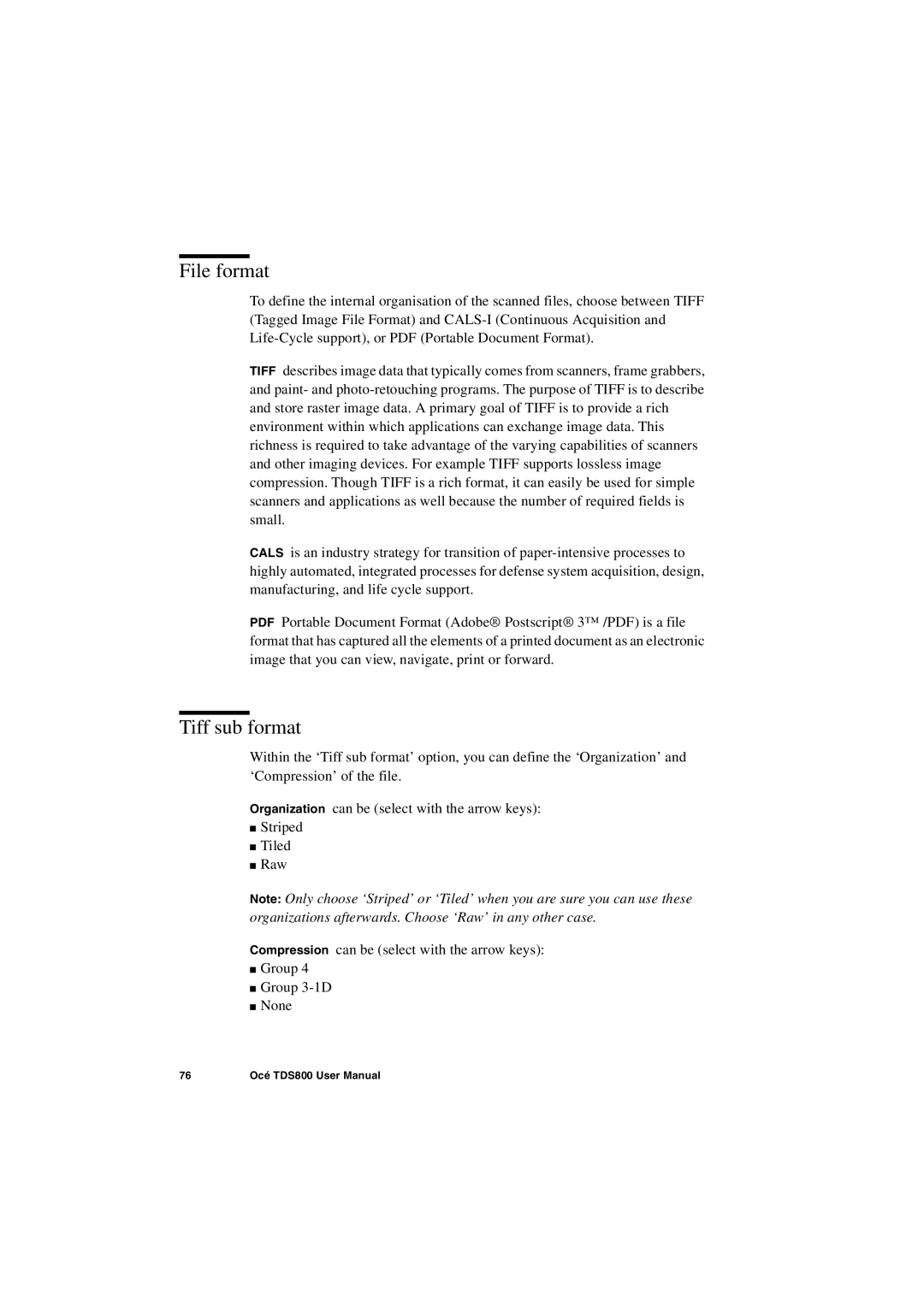
File format
To define the internal organisation of the scanned files, choose between TIFF (Tagged Image File Format) and
TIFF describes image data that typically comes from scanners, frame grabbers, and paint- and
CALS is an industry strategy for transition of
PDF Portable Document Format (Adobe® Postscript® 3™ /PDF) is a file format that has captured all the elements of a printed document as an electronic image that you can view, navigate, print or forward.
Tiff sub format
Within the ‘Tiff sub format’ option, you can define the ‘Organization’ and ‘Compression’ of the file.
Organization can be (select with the arrow keys):
■Striped
■Tiled
■Raw
Note: Only choose ‘Striped’ or ‘Tiled’ when you are sure you can use these organizations afterwards. Choose ‘Raw’ in any other case.
Compression can be (select with the arrow keys):
■Group 4
■Group
■None
76 | Océ TDS800 User Manual |
